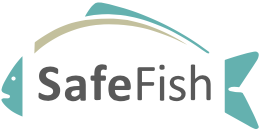Vibrio risk is predominantly a concern for bivalves, but in New Zealand over the 2021/2022 summer, illnesses were associated with lobster, abalone, urchin, and finfish species. This is a complex issue with poor knowledge on prevalence in Australian aquatic environments, pathogenicity of strains, environmental triggers of pathogenic strains, relationship between pathogenicity and illness, and difficulty in identifying pathogenicity targets for use in identifying pathogenic strains. These factors have together resulted in a low capability to detect pathogenicity in Australia. Compounding risk management, V. parahaemolyticus is currently not a notifiable pathogen in every Australian state and consequently illnesses are under-reported. Internationally, outbreaks are less common than sporadic illnesses and this is also true of illnesses in Australia thus far. As Vibrio risk is closely related to an increase in temperature and other environmental triggers and Vibrio are opportunistic bacteria with fast growth rates and high plasticity, this issue is likely to increase with the changing environments expected with climate change.
There are significant knowledge gaps in environmental risk and human health response to Vibrio and currently there is no uniform national policy for risk management. Cold chain management and traceability is linked to this issue and have been highlighted as areas that need improvement in the recent outbreaks. Also, a recent change to the Australian Standard Method of analysis from a quantitative to a qualitative test could have impact on outbreak response activities and is likely hinder the collection of additional information to inform future risk management.
Current SafeFish Activities
There are a number of processes that are currently occurring to address the research gaps for Vibrio and SafeFish is heavily involved in several of these. This project will focus on improving the knowledge and tools necessary to effectively manage Vibrio risk. We have recently undertaken the following activities:
- Conducted a review of available international testing methods for vibrio detection to highlight which would be appropriate for implementation in Australia
- Determined the national volume of Vibrio testing in seafood required in Australia and liaise with Australian commercial laboratories to identify laboratories that will offer NATA certified quantitative Vibrio analysis.
- Provided technical and financial support to the national collaborative research strategy for Vibrio parahaemolyticus
This project will run from January 2023 to June 2025.
Useful Resources
Best Practice Guides
Ministry for Primary Industries New Zealand (2018). Harvesting and handling practices used to mitigate Vibrio parahaemolyticus illness.
Angelo DePaola (2019). Managing Vibrio risk in oysters. Food Protection Trends.
Codex Alimentarius Commission (2010). Guidelines on the application of general principles of food hygiene to the control of pathogenic Vibrio species in seafood. CAC/GL 73-2010.
Oysters Tasmania (2023) Vibrio parahaemolyticus – A guide for Tasmanian Shellfish Growers
South Australia Oyster Growers Assoc. (2023) Vibrio parahaemolyticus – A guide for South Australian oyster growers
U.S.A. National Shellfish Sanitation Program (NSSP) (2019). NSSP Guide for the Control of Molluscan Shellfish
Australian Research on Vibrio species
Torok et al. (2023). Risk profile: Vibrio parahaemolyticus and Vibrio vulnificus in oysters and mussels in Tasmania. FRDC Project 2018-031.
Padovan et al. (2023). Growth of V. parahaemolyticus in Tropical Blacklip Rock Oysters
Harlock et al. (2022). Emergence of non-choleragenic Vibrio infections in Australia
Madigan et al. (2016). Assessing the occurrence of pathogenic Vibrio species in oysters from Moulting Bay FRDC Report 2015-042.
Fernandez-Piquer et al. (2011). Predictive models for the effect of storage temperature on Vibrio parahaemolyticus viability and counts of total viable bacteria in Pacific Oysters (Crassostrea gigas).
Tamplin et al. (2011). Protecting the safety and quality of Australian oysters with integrated predictive tools FRDC Report 2007/719.
Stewart et al. (2009). Prawn Market Access Defenders
Lewis et al. (2003). Pathogenic Vibrio parahaemolyticus in Australian oysters FRDC Report 2001/409.




